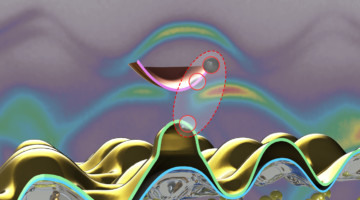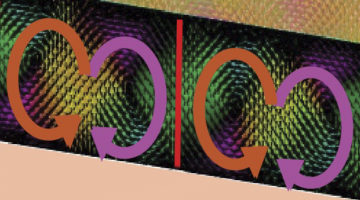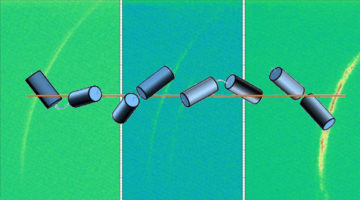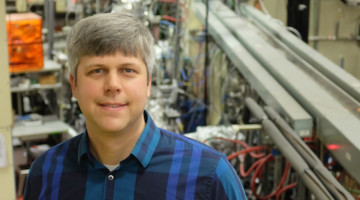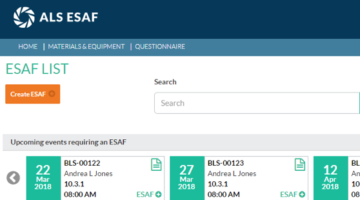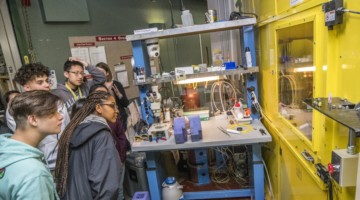The electronic structure of a stacked 2D material was tuned by in situ electron doping, resulting in a large increase in the splitting of two valence bands. Stacked 2D materials possess an array of tunable properties that are expected to be important for future applications in electronics and optics. Read more »![]()
![]()
ALSNews Vol. 392
March 28, 2018
Phase Diagram Leads the Way to Tailored Metamaterial Responses
Researchers discovered an innovative way to independently control two optical responses in a single-material system by utilizing the material’s phase diagram. This unique combination of material, methods, and results could lead to a paradigm shift in the design of metamaterial devices that manipulate light. Read more »![]()
![]()
TE Connectivity Uses ALS to Improve Conductive Plastics
TE Connectivity used ALS microtomography capabilities to optimize the material and manufacturing parameters of their conductive plastics to impart good electrical conductivity. Conductive plastics with good electrical properties offer processing and cost benefits over metal alternatives, with applications ranging from automotive to data communications. Read more »
X-Ray Handedness Reveals Handedness of Electronic Vortices
Electronic vortex structures have been found to emerge from engineered samples of alternating complex-oxide layers. Resonant soft x-ray diffraction (RSXD) studies using circularly polarized x-rays revealed the vortices’ left- and right-handedness. The intriguing results open the door to electrically controllable chiral devices. Read more »
Twisted Structures Emerge from Achiral Molecules
The spontaneous formation of chiral structures from achiral molecules could shed light on the origin of biological homochirality—how one type of chirality dominated the other in certain biological molecules. Here, resonant soft x-ray scattering (RSoXS) has been used to explore helical phases that emerge from achiral asymmetric dimers. Read more »
Kevan Anderson, Beamline Controls Lead
Kevan Anderson joined the ALS in August as supervisor of the Beamline Controls Group, which is responsible for supporting the integrated control systems associated with ALS beamlines. Anderson works with a group of software developers who are available to beamline scientists. Read more »
Experiment Safety Assessment Form (ESAF) to Replace ESS
The ALS is transitioning from the Experiment Safety Sheet (ESS) to the Experiment Safety Assessment Form (ESAF). Although the ESS software will continue to be available for several months, we will encourage most users to use the ESAF system. Follow instructions in your email reminder to access the appropriate system for your beamline. For beam time after April 12, most users will be expected to use the new ESAF tool. Read more »
Local High Schoolers Get “The ALS Experience”
As part of a pilot program to strengthen the STEM career pipeline in the East Bay, Berkeley Lab’s Workforce Development & Education and the Advanced Light Source recently collaborated on a high school study trip. Students from two local high schools worked with scientists at the ALS to design custom experiments and then spent a day at the ALS running their experiments and learning about the ALS and Berkeley Lab. Read more »
